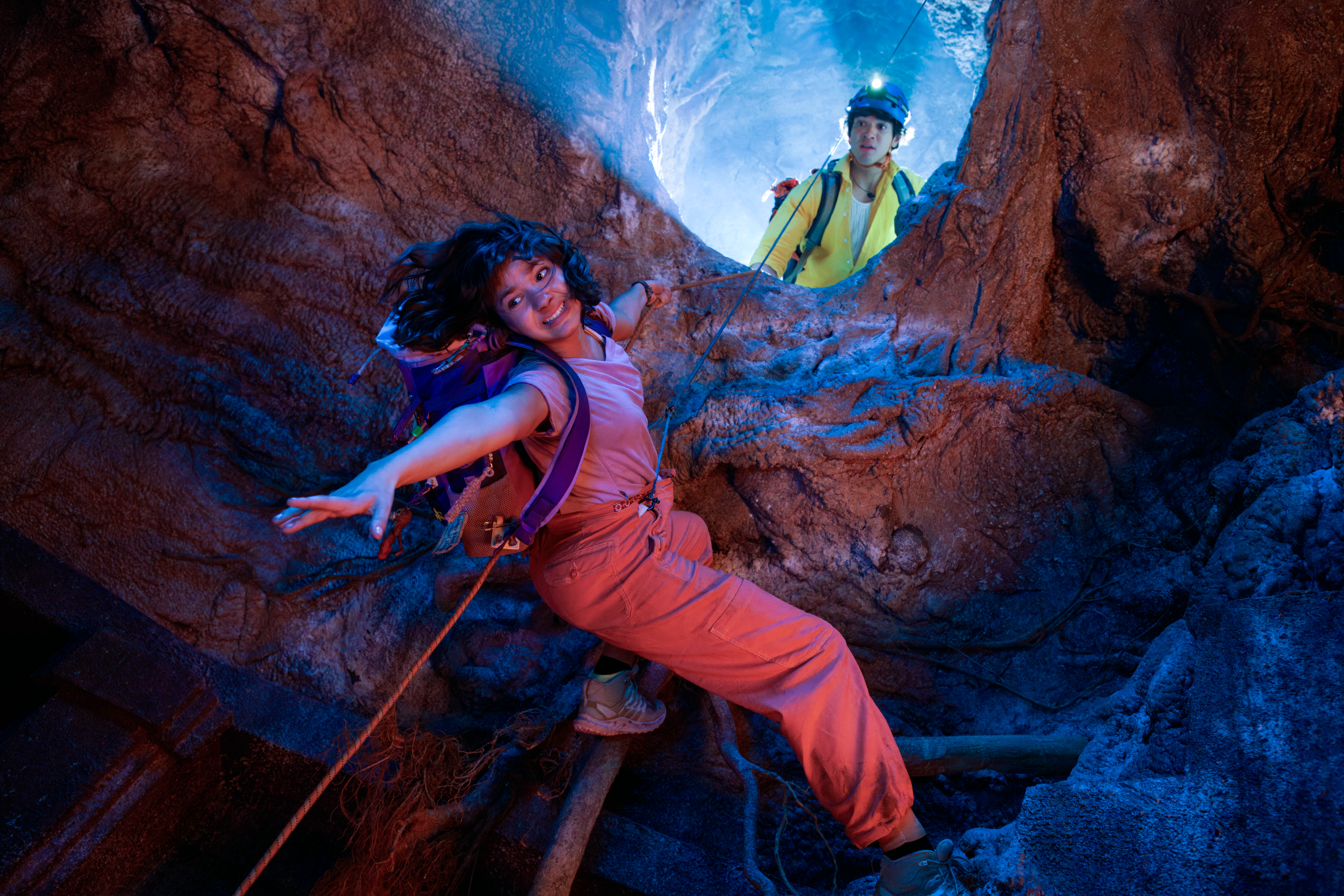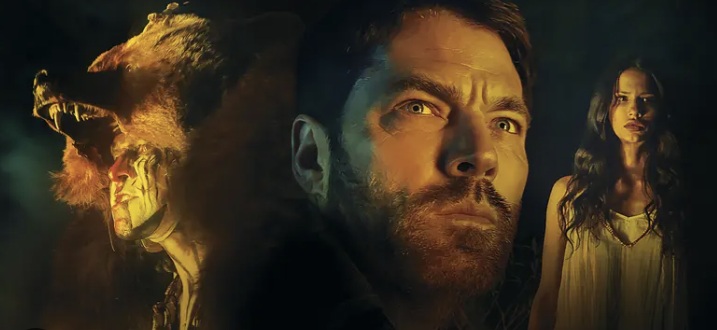Tonight, Black Panther is hitting theaters across the U.S., and audiences are falling in love with T’Challa and the wonderfully technological world of Wakanda.
To help in bringing this world to life, director Ryan Coogler enlisted the help of production designer Hannah Beachler, who had worked with him on his previous two outings, Fruitvale Station and Creed. This was no small task. This is a world that has been present for decades in comics, and the pressure of mixing together the technology tomorrow all while maintaining the visual flare of African countries would come with its challenges.
LRM had a chance to sit down with Beachler and discuss her process in making this world, as well as the thought and work that went into the Warriors Falls, where T’Challa fights for the throne near the beginning of the film.
Check out the interview below!
How did you feel, watching the movie for the first time?
Beachler: Oh, I was super happy. It was overwhelming. I was like, I wanted to see what everybody else’s reaction … And then I’m … You look very specifically at things in the frame, and then you remember, a lot of stuff, like when something would come on the screen I would just remember, oh this is sort of what we went through, doing this set … The memories of it, you know? So I was thinking a lot about that and find myself at times not really paying attention, to what was happening, because I’m like, “Oh”, you know, replaying it in my mind, but I was so happy. I couldn’t have been happier. It was epic. It was overwhelming. And of course I … It’s Ryan so it’s just fantastic. It’s a story, you know? It’s a story about a man, trying to come to terms with being king.
Right. Was there a part in the movie when you watched it last night where you were like, “Whoa! That really came out really … Wow, I really did do a good job.” Patting yourself on the back?
Beachler: I was like that a little bit I would say, and I’ve said a few times today my favorite set is Shuri’s lab. And M’Baku’s … The Jabari. When they go into the snow area. So I was really, happy and excited about those two things, and one because one was my favorite and the other was, a little bit of a struggle for me to find the design look in that, so it was nice to see when I saw it on screen I was like, “Oh! It came out” … And it does look good. It is the right thing and everything that Ryan and I talked about and where we wanted to take that. It really did come out.
It seems like you did have a challenge because Wakanda had, different … It seemed like they were different worlds. You had the desert. You had the greens. You had the snow. You had the, part where it’s all high tech, out of this world … How did you find a balance in all that?
Beachler: It’s about, really being eclectic and finding that cohesion, and the cohesion comes from smaller things, like colors and things that are more tangible that kind of string it together. You know the thing about Wakanda … There’s one thing that’s consistent in Wakanda, and that’s everything is circles. And you really got to look at it to get that, except for one thing, which was the Jabari, which was not circles. They’re supposed to be separate. You sort of learn in the beginning, in the opening that they went off on their own. I think a lot of the struggle with that was like, how do you make it different from the rest of Wakanda. So you won’t see any circles in the Jabari. You know, the throne is a circle. The challenge pool is a circle. The palace is a circle. Shuri’s lab is a circle. The Hall of Kings is a circle. But you look outside and everything else is square. That’s not part of Wakanda which is Korea and Oakland and all the other things so when you look at the Jabari it’s square.
You … You’re right! You just pointed that out that I totally missed.
Beachler: So that’s how we did that. That was very conscious. At first it wasn’t, and then when I realized I was doing that, like everything in this land was circles, that’s when Ryan came in when I was struggling with Jabari and he’s like, “It shouldn’t be like everything in the rest of Wakanda.” He’s like, “Let’s make them sharp edges.” And I’m like, “That’s it!” That’s it! They’re going to be square like the outside world. So when you’re in … London, everything’s very … You have all these square cases. You know, all the square pedestals in the museum. All the sharp angles. That’s how we separated everything out, so we put the Jabari with the other even though they’re part of that, world.
How did you go about putting the Warrior Falls together?
Beachler: We did a location scout/research trip to South Africa. We went to … All up and down the coast. Cape Town, Durbin, Kwazulu Natal, all those places up in there. And there’s a picture of me right behind you in Blyde Canyon. So, a lot of my research with the different types of indigenous plants and the rock … How the rock looked different in different regions, and why it looked different … So that’s sort of where falls came from, is that … Even in Blyde Canyon all of their rock is shaled horizontally, where we’re used to seeing big chunks of rocks, big square pieces of rocks, where theirs is like these little, slivers. And we made ours a little bit bigger because we knew we were going to do these longs shots.
But, if you look at these rocks, close up … And they’re red, but they have these very distinct black. Just dark black in them. So we wanted to do that where the water is coming down and that we wanted because the dirt is red the rock would be red. The sediment is red, the rock would be red. That’s where we get the coloring from. And then we wanted it to feel like … There’s no place to run if you’re losing. You know what I mean? Like, you’re either going to go over the edge … There’s no fleeing. There’s no fight or flight, you know? And that’s how the king’s challenge is run, and that’s sort of the idea that Ryan wanted the set to feel like, like he can’t go can’t go that direction, he can’t go that direction, he can’t climb back up the cliff… You know what I mean? So that brings that imminent feeling of danger, to it. And we wanted to man … And it was really Ryan who was like, “I want to make it as steep as possible. I want people standing on ledges and celebrating and doing this.” So I really looked at how the leveling was in a lot of the rock and mountains. So there was a lot of rock research.
Yeah. For sure. But that was impressive! The fighting scene though … There’s water. Was there any slipping?
Beachler: We did have 150,000 gallons of water going through that set for two weeks and one of the things that we did for safety was the way that we treated the bottom of the water pit there. So you could fall on it. And there was a cushion in it. I mean, it did create other problems. We made it through, but that was part … Cause we knew that that was going to, a big stunt scene for, the fights and what not.
Yeah.
Beachler: So we had to make sure that what we created where the actors were, was going to be, softer underneath the ground. On the ground. For them to do the falls and the lifts and, you know … And some of it isn’t and they just had to … That’s the type of, actors. That’s where they will take this, is to do whatever it takes to get the scene right.
I understand that you did have to … You did make a couple of trips to Africa …To get some more inspiration, for all this.
Beachler: I did. I went to … When I went to South Africa and … Ryan went, when I first came on, he was there for, about a month I would say, writing. And he would send me pictures and … He would see stuff and be like, “You know, this is really cool.” Or, “How can we incorporate this.” And that was just the very beginning stages so … That was a very important trip because I got to understand sort of the use of colors and textiles, the materials that were used, and though I’d used them in a different way, it was really important that I understood how things, were, used by the people that live there. And how they were used in their tradition … So I could be right. You gotta know the rules before you can break the rules, type idea. Which I always just think like, ” Oh, that’s so stupid.” But now that I’m an old lady … I completely understand like yeah, that’s something that you have to do.
Okay. So tell me how, excited you were to get involved into this … This project I mean a comic.
Beachler: I’m so excited! I never anticipated anything like this in my career. It’s rare that one gets to, experience something on this level. You know? There’s a handful of people in my position as production designers in this craft who have been able to, have the good … The opportunity, the luck, and all of it to experience this. So when Ryan called me, the first thing that popped in my head was, that, how honored I was that he entrusted this to me. And that he really believed in me, you know? And it’s really important, that I have that person, in Ryan because it’s just really important to, for me to do my craft to the best of my ability. There was never a moment where he felt like, I couldn’t. Even though I might have doubted myself sometimes, we all have doubts, but he never, ever thought that. So it kept me going.
Don’t forget to share this post on your Facebook wall and with your Twitter followers! Just hit the buttons on the top of this page.

 FOR FANBOYS, BY FANBOYS
Have you checked out LRM Online’s official podcasts and videos on The Genreverse Podcast Network? Available on YouTube and all your favorite podcast apps, This multimedia empire includes The Daily CoG, Breaking Geek Radio: The Podcast, GeekScholars Movie News, Anime-Versal Review Podcast, and our Star Wars dedicated podcast The Cantina. Check it out by listening on all your favorite podcast apps, or watching on YouTube!
Subscribe on: Apple Podcasts | Spotify | SoundCloud | Stitcher | Google Play
FOR FANBOYS, BY FANBOYS
Have you checked out LRM Online’s official podcasts and videos on The Genreverse Podcast Network? Available on YouTube and all your favorite podcast apps, This multimedia empire includes The Daily CoG, Breaking Geek Radio: The Podcast, GeekScholars Movie News, Anime-Versal Review Podcast, and our Star Wars dedicated podcast The Cantina. Check it out by listening on all your favorite podcast apps, or watching on YouTube!
Subscribe on: Apple Podcasts | Spotify | SoundCloud | Stitcher | Google Play






